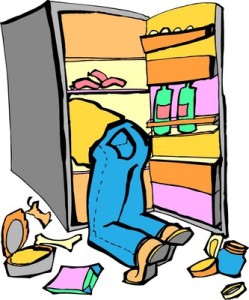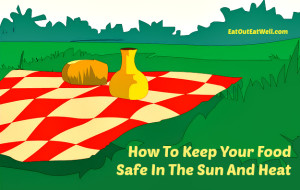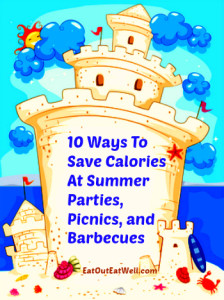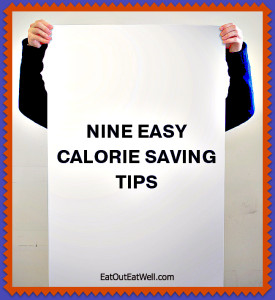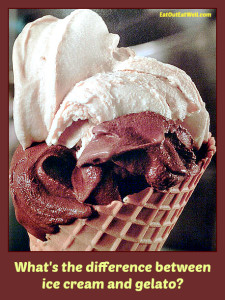 What says summer more than strolling down the street, ice cream cone in hand – trying to lick up every last melting drip before it hits the sidewalk?
What says summer more than strolling down the street, ice cream cone in hand – trying to lick up every last melting drip before it hits the sidewalk?
The cold deliciousness of ice cream, gelato, or sorbet is hard to beat. There are an astounding number of choices with varying degrees of fat, calorie, sugar, and dairy content. The sad truth is that no matter how innovative food scientists and savvy marketers have become, a three-scoop sundae with hot fudge, whipped cream, and other assorted toppings still isn’t going to rank at the top of the health-o-meter.
The Difference Between Ice Cream And Gelato
In the US, the government regulates what can be called ice cream, but in some other countries ice cream can mean all frozen desserts.
Ice cream and gelato are usually dairy-based but differ in texture, fat and air content, and ingredients. Because gelato is made and stored at a higher temperature than ice cream, it’s softer, smoother, and quicker to melt.
Both are usually made from sugar, milk, eggs, and flavorings — although gelato is often made from fresh fruit. Gelato has less butterfat than ice cream, usually about 4 to 8% compared to ice cream’s 10 to 20%.
Gelato has a higher sugar content than ice cream, and the sugar/water combination acts like anti-freeze — preventing the gelato from freezing solid. Most US commercial ice creams are frozen in an assembly line freezing process while gelato is frozen very quickly in small batches.
Both ice cream and gelato are churned during the freezing process, which incorporates air. Most commercial ice cream contains about 50% air while gelato contains much less, generally 20-35%, producing a denser product with more intense flavor.
Ice cream is sold by weight, not by size, so a pint of cheaper ice cream which is fluffed up with more air than premium or artisanal ice creams will feel lighter than better brands which are pumped up with just enough air to make the ice cream nice and smooth. Compare pints of different levels of quality when they’re fresh out of the freezer case. Which one is heavier in your hand? Not suprisingly, the premium brands will also be higher in calories, probably have more intense flavor, and be higher in price.
Ice cream, with its higher fat content, can be stored frozen for months. High-quality artisan gelato, when stored carefully at consistent, low temperatures, only keeps its peak flavor and smooth texture for several days.
What’s In The Frozen Desserts?
According to US federal standards, a frozen dessert must have a minimum of 10% milk fat to be called ice cream. Economy brands usually have the least amount of fat and super premium brands have more. Milk fat content of less than 10% makes the product ice milk or light ice cream.
- Premium ice cream has between 11% and 15% butterfat, which makes it richer, denser, higher in calories. It often comes in gourmet flavors.
- Regular ice cream – what you usually find in the larger containers in the market — is somewhat less dense and contains 10% to 11% butterfat (perfect for milkshakes).
- Economy ice cream, by law, has 10% butterfat.
- Light ice cream has either 50% less fat or 33% fewer calories than the producer’s regular ice cream. Here’s the hitch: because of the starting point of fat content, light versions of premium ice cream can have more fat and calories than the regular version of other brands.
- Reduced fat ice cream must, by law, have 25% less fat than the regular ice cream produced by the same vendor.
- Soft serve ice cream is the same as regular ice cream but is served at a higher temperature.
- French Style Ice Cream also called glace, has a custard base that includes eggs, which makes it silky and rich.
- Gelato (plural, gelati) has more milk than cream (if any) so its fat content is significantly lower. It doesn’t saturate your taste buds as much as ice cream so the flavor seems more intense. It’s often flavored with fresh fruit, nuts, chocolate, and other natural flavors. Gelato is served at a higher temperature than ice cream making it look more like frozen yogurt or whipped cream than ice cream.
- Sorbet, which means water ice, is made from fruit, wine, or liqueur, but not milk, is sometimes flavored with herbs and spices and then whipped to lighten its texture. It’s sometimes used as a palate cleanser.
- Sherbet, like sorbet, is traditionally fruit flavored but with milk added for creaminess. By law it contains between 1 and 2% butterfat – which makes it lighter in flavor and texture.
- Granita is similar to sorbet but not whipped. Ice crystals give it a granular appearance and a crunchy texture.
How Many Calories?
There’s a huge variation in nutrition so it’s best to check labels if you’re counting calories, fats, and/or carbs. These are the general caloric ranges for “naked” ice cream and gelato (without sauce, toppings, nuts, and whipped cream):
- 3.5 oz of milk-based gelato has between 120 and 160 calories, 4g to 8 g of fat, and 30 g to 45 g of carbs.
- Milk and soy-based gelato has between 3g and 5g of protein. Sorbet, with no dairy, has no protein.
- 3.5 oz of American ice cream (not churned, light, or reduced fat) averages 240 calories, 15 grams of fat, and 24g carbs.
- 3.5 oz of light ice cream can vary between 100 to close to 200 calories depending upon whether it is just light or if it is slow churned light. The flavor and the add-ins for the flavor can significantly raise the calorie count.
- Frozen yogurt also has a wide range of calories depending on fat content. Frozen yogurt can be as caloric, if not more caloric, than other frozen desserts.
Tip: Order a small serving of ice cream or gelato instead of a medium or large. You’ll probably be just as satisfied. Even if you indulge in your favorite full-fat flavor, you’ll save as many as 550 calories with a 5-ounce size of ice cream instead of a 12-ounce size.
